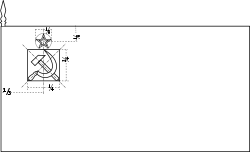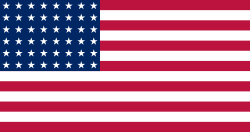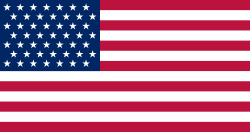Bill Cleary
| Bill Cleary | |
|---|---|
 Bob Cleary a Bill Cleary (vpravo) | |
| Narození | 19. srpna 1934 (90 let) Cambridge |
| Bydliště | Cambridge |
| Alma mater | Harvardova univerzita |
| Povolání | hokejista a hokejový trenér |
| Ocenění | Síň slávy IIHF (1997) Lester Patrick Trophy (1997) |
| Příbuzní | Bob Cleary (bratr) |
| Některá data mohou pocházet z datové položky. | |
| Přehled medailí | ||
|---|---|---|
| stříbro | ZOH 1956 | USA |
| zlato | ZOH 1960 | USA |
William John Cleary (* 18. srpna 1934 Cambridge, Massachusetts, USA) je bývalý americký lední hokejista a hokejový trenér.
Hráčská kariéra
Hrával univerzitní hokej za tým Harvard University, kde stále drží některé rekordy (např. nejvíce bodů v jednotlivé sezóně - 89). V roce 1956 byl členem amerického týmu, který vybojoval na Zimních olympijských hrách stříbrné medaile. Poté dostal nabídku na profesionální smlouvu od Montreal Canadiens z National Hockey League, kterou však odmítl a pokračoval v univerzitní soutěži. Za americkou reprezentaci hrál také na mistrovství světa v letech mistrovství světa 1957, 1958 a 1959, v roce 1959 byl vyhlášen nejlepším útočníkem. V roce 1960 přispěl na Zimních olympijských hrách k zisku zlatých medailí pro americký tým.
Trenérská kariéra
Více než 20 let působil jako trenér Harvardovy univerzity. V roce 1989 přivedl tým k vítězství v univerzitní soutěži National Collegiate Athletic Association. S trenérstvím skončil v roce 1990, poté deset let pracoval jako sportovní funkcionář.
Ocenění
- zvolen americkým hokejistou desetiletí (1956–1966)
- člen Hokejové síně slávy Mezinárodní hokejové federace (od roku 1997)
- člen Americké olympijské síně slávy
- zvolen Americkým olympijským výborem do "Stovky zlatých olympioniků" (1996)
- je po něm pojmenovaná trofej pro vítěze základní části univerzitní ligy ECAC - Cleary Cup
Reference
V tomto článku byl použit překlad textu z článku Bill Cleary (ice hockey) na anglické Wikipedii.
Externí odkazy
- Bill Cleary – statistiky na Elite Prospects (anglicky)
- Bill Cleary v databázi Olympedia (anglicky)
Média použitá na této stránce
Olympic Rings without "rims" (gaps between the rings), As used, eg. in the logos of the 2008 and 2016 Olympics. The colour scheme applied here was specified in 2023 guidelines.
Olympic Rings without "rims" (gaps between the rings), As used, eg. in the logos of the 2008 and 2016 Olympics. The colour scheme applied here was specified in 2023 guidelines.
(c) I, Cmapm, CC BY-SA 3.0
The flag of the Soviet Union (1955-1991) using a darker shade of red.

(c) I, Cmapm, CC BY-SA 3.0
The flag of the Soviet Union (1955-1991) using a darker shade of red.

US Flag with 48 stars. In use for 47 years from July 4, 1912, to July 3, 1959.
US Flag with 49 stars. In use 4 July 1959–3 July 1960. It was defined in Executive Order 10798.
Bob Cleary and Bill Cleary
The Canadian Red Ensign, the national flag of Canada from 1957 to 1965. (see: the Canadian Red Ensign on the Register of Arms, Flags and Badges)
The Canadian Red Ensign used between 1921 and 1957.
This image has compared for accuracy (mainly colors) using an image from World Statesmen. The only change is making the maple leaves green from red. This image has compared for accuracy (mainly colors) using an image from World Statesmen. The most recent version of this image has changed the harp into one with a female figure; see [http://flagspot.net/flags/ca-1921.html FOTW









